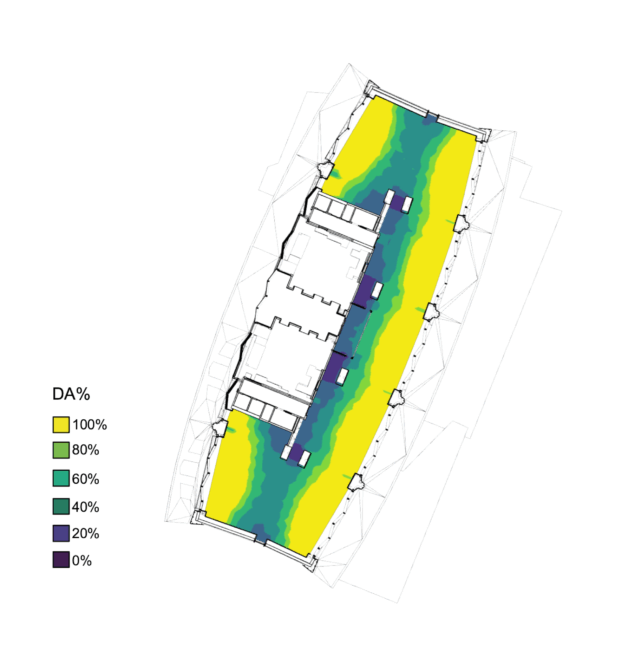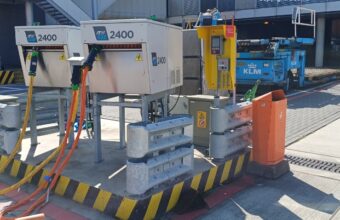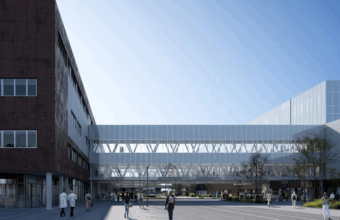Computational Parametric Design (CPD), Modelling & Simulation
At Deerns, we leverage Computational Parametric Design (CPD) to provide insights that make buildings both beautiful and technically superior. We design sustainable, efficient, and high-performing buildings that align with our clients’ goals and budgets—all while minimizing environmental impact.

Computational Parametric Design (CPD) combines digital computing and building physics to optimise building design and performance. This innovative, data-driven approach enhances collaboration between architects and engineers through visualisation and simulation, streamlining the design process. It also helps clients and teams better understand how buildings will perform and overall building performance is improved.
Daylight and lighting
At Deerns we use CPD to optimise natural light by simulating daylight patterns and balancing them with artificial lighting, ensuring energy efficiency and a comfortable visual environment.
Thermal comfort
With CPD we simulate thermal performance to optimise heating and cooling, ensuring occupant comfort year-round while enhancing energy efficiency and reducing emissions.
Acoustics
By analysing and optimising acoustics we reduce noise and enhance sound quality, creating comfortable, productive and acoustically balanced indoor environments.
Resource Efficiency
By using CPD to optimise material use, energy systems and water management we improve overall resource efficiency. This is essential for reducing operational costs and environmental impact.
Holistic performance modelling
By integrating multiple factors into a cohesive model, CPD allows for a holistic analysis of building performance and areas of improvement. Deerns’ approach involves several key steps:
- We combine robust building physics expertise with digital computing and computer science to create comprehensive models.
- By creating detailed 3D models we visualise and simulate various building performance aspects such as air flow, light distribution and thermal dynamics.
CPD allows us to simultaneously evaluate different design scenarios providing data-driven insights for informed decision-making. - We conduct extensive iterations to find the optimal balance between different performance factors, ensuring cost-effective and sustainable solutions.
High-precision simulations
Global coverage
+ 1,000
+ 200

Deerns uses CPD to give our clients a clear competitive advantage by delivering efficient, sustainable solutions optimised for long-term performance.
- Empowering architects: CPD provides architects with detailed insights early on, enabling informed design decisions without compromising aesthetics.
- Enhanced sustainability: By simulating and comparing design scenarios, we identify the most resource-efficient and environmentally responsible options.
- Improved planning and efficiency: Early integration of CPD helps avoid costly design changes, reducing both capital (CAPEX) and operational (OPEX) expenditures.
- Risk reduction: By anticipating performance issues early, CPD minimises the risk of late-stage revisions and costly inefficiencies.
" By embracing a “Data‑Driven Design” approach, we combine climate data with human insights to create buildings that are more efficient, comfortable and sustainable – responding to real‑world complexity rather than relying on prepackaged solutions.
Frequently asked questions
How does CPD enhance natural daylight and lighting strategies?
Through daylight modelling and simulation, CPD predicts sun paths and interior illuminance levels, balancing them with artificial lighting. This ensures visual comfort, reduces energy use and creates harmonious environments that respond dynamically to changing light conditions.
How does CPD support architects and engineers collaboratively?
CPD’s visualisation capabilities bridge the gap between architectural intent and engineering rigour. Interactive simulations foster real‑time feedback, enhancing interdisciplinary dialogue and expediting consensus on 3D design choices.
When, in the project timeline, is CPD most impactful?
Embedding CPD at the concept and schematic stages uncovers performance trade‑offs early on—avoiding late‑stage redesigns and keeping budgets on track.
How do you achieve faster turnaround?
Using Data-Driven Design plugins enables us to significantly reduce modelling improvements and fine-tuning.
What is Deerns' approach to climate-responsive design?
There’s no one-size-fits-all recipe for effective climate‑responsive design. Each project calls for tailored, collaborative solutions. Our aim is to ensure every design decision is informed, transparent, and pragmatic.











